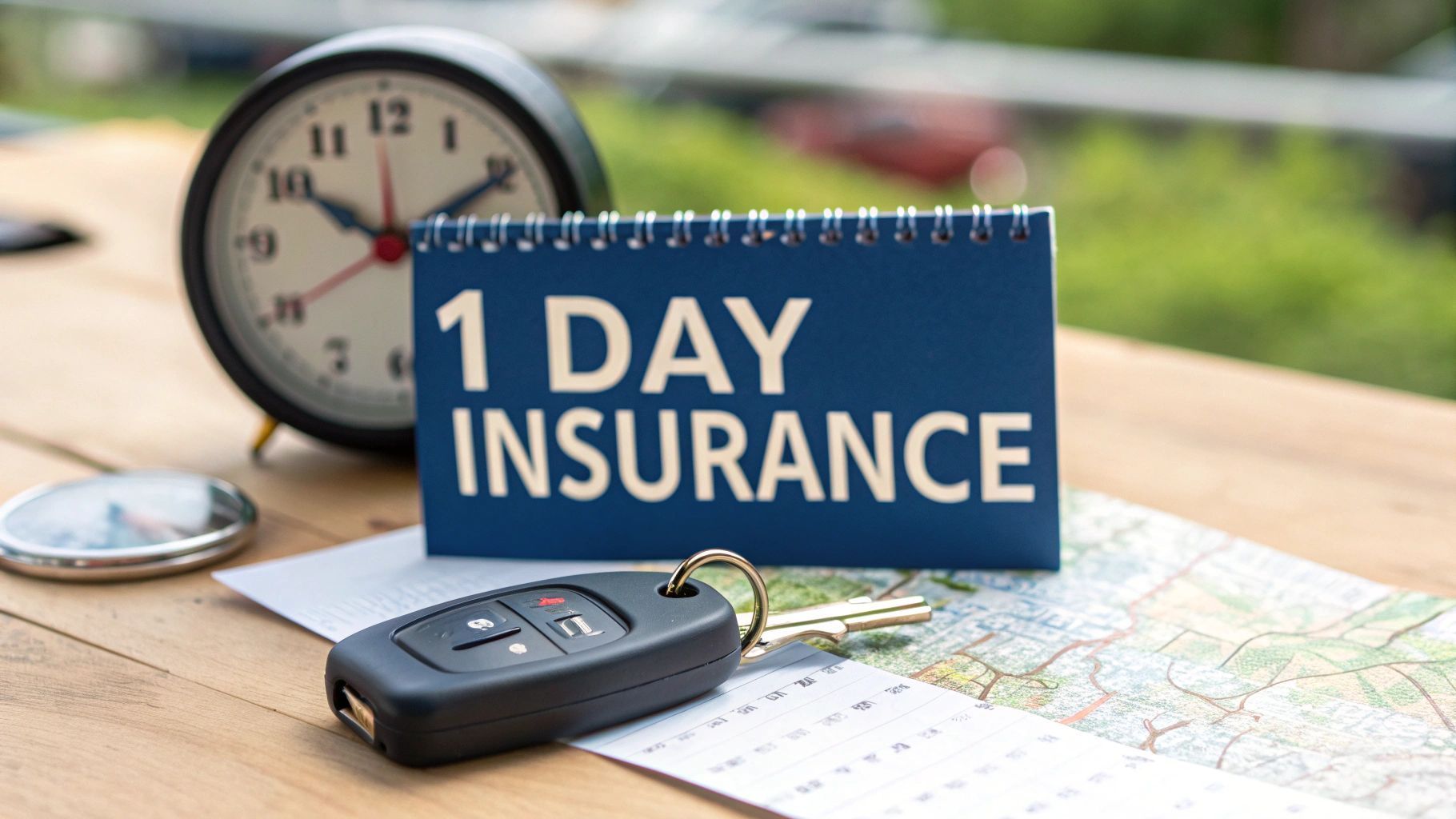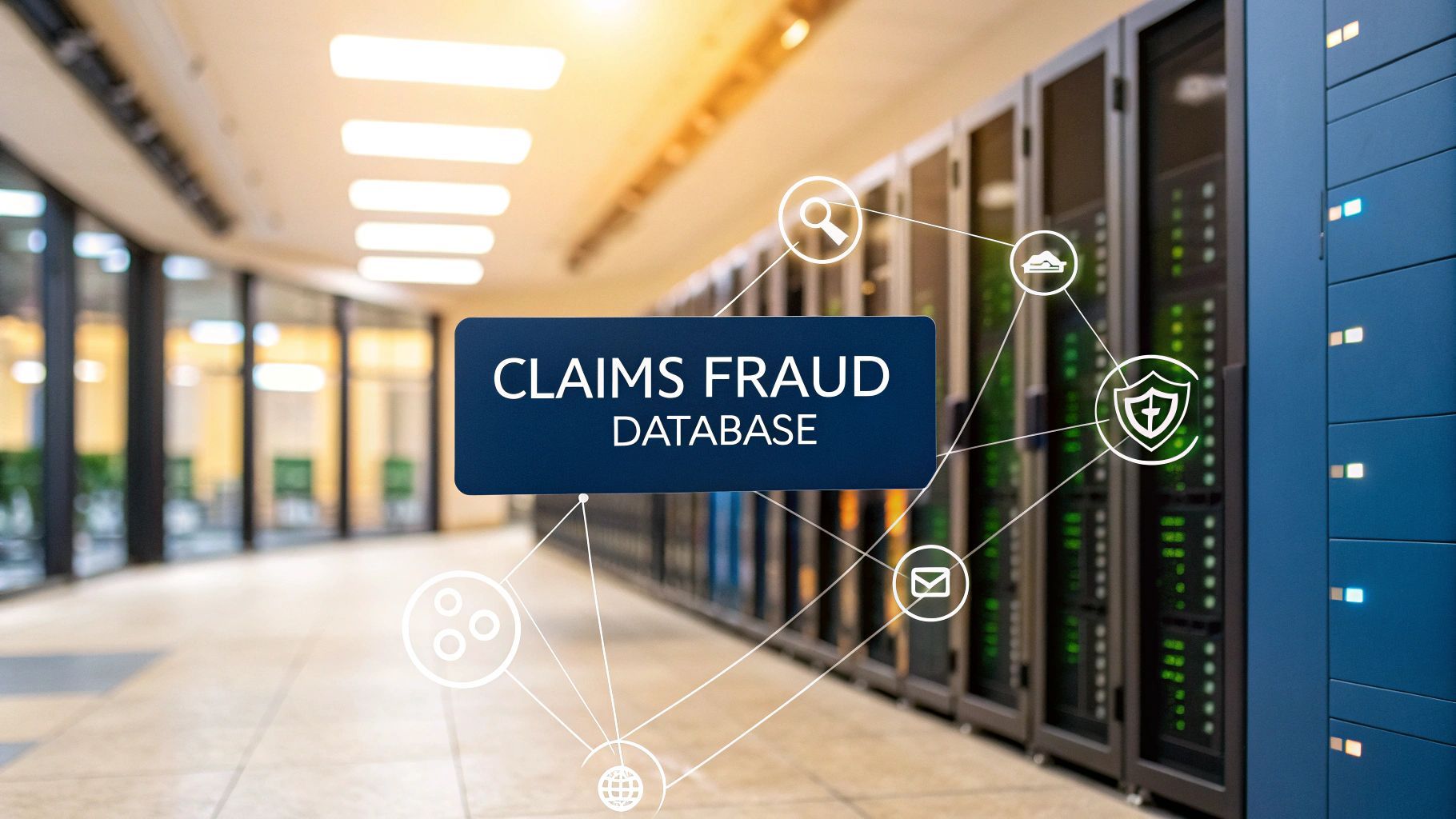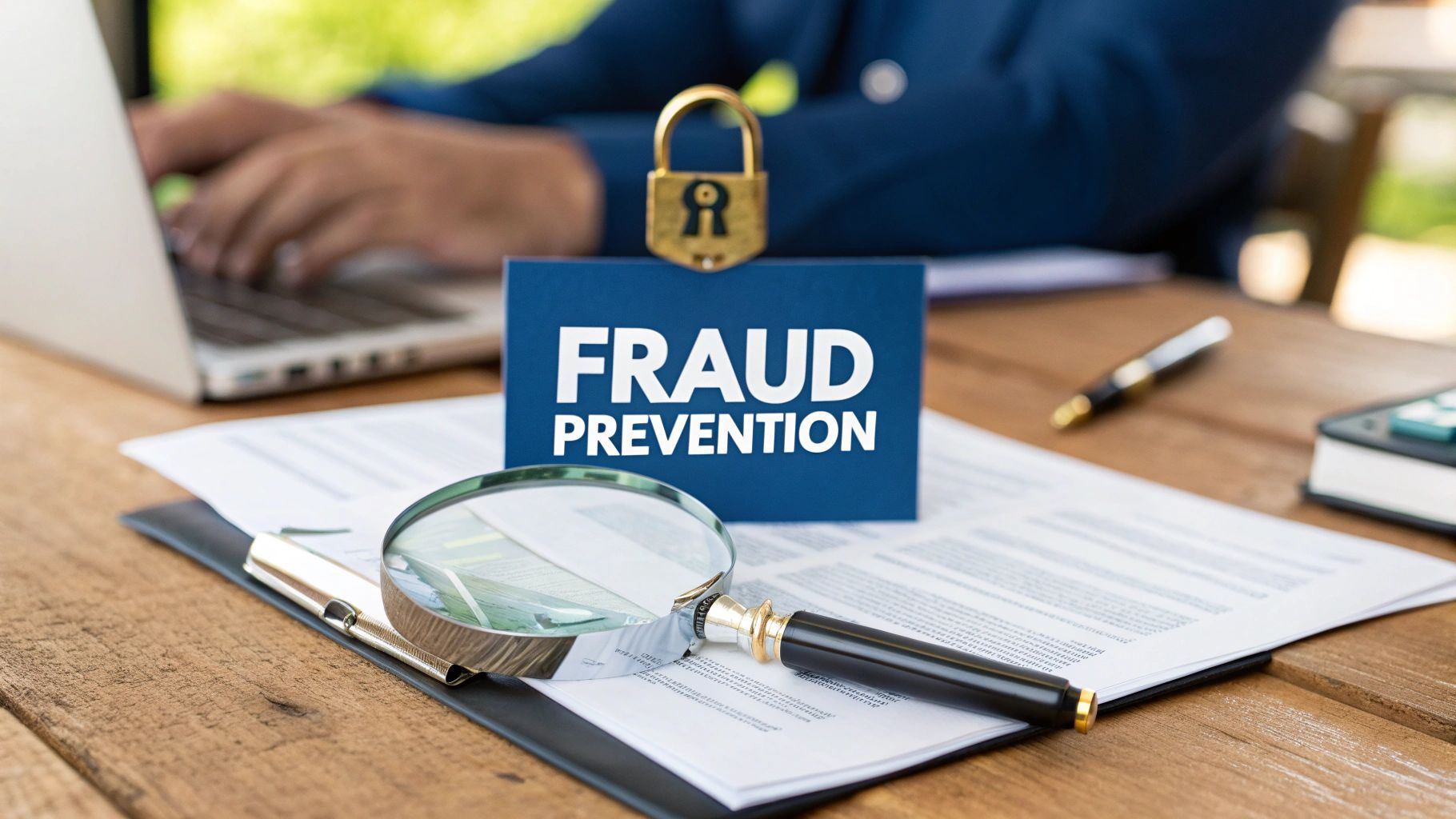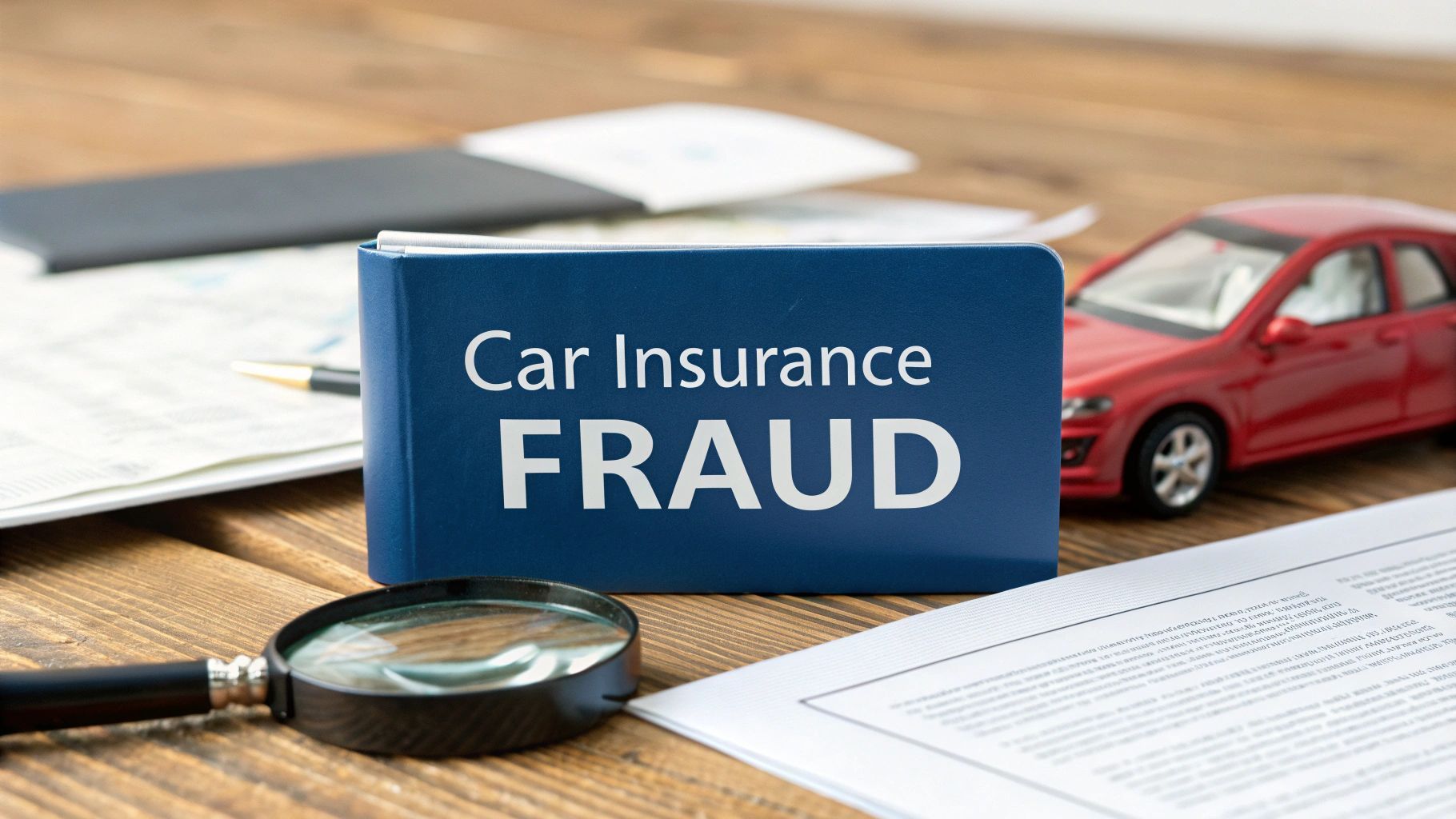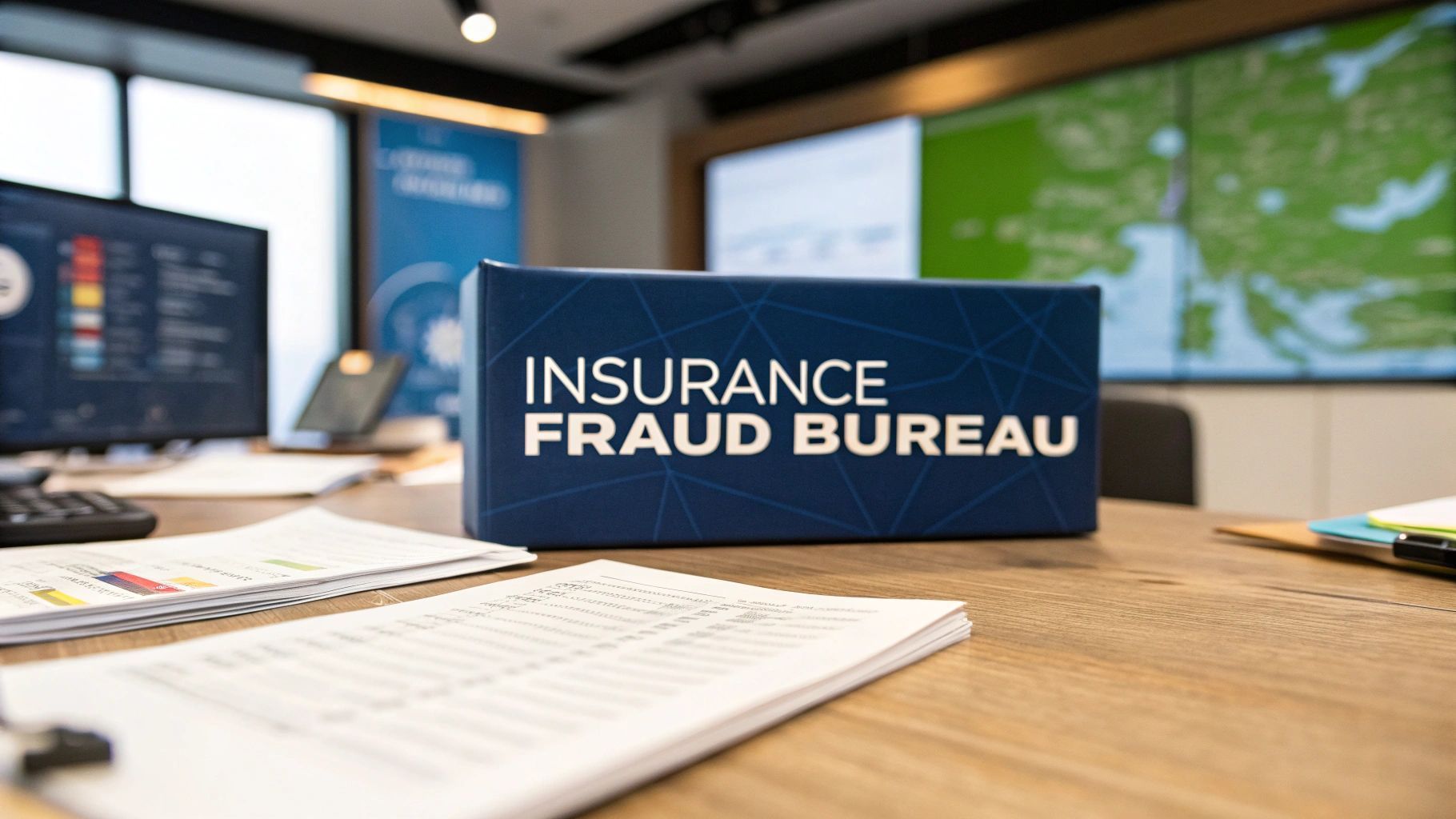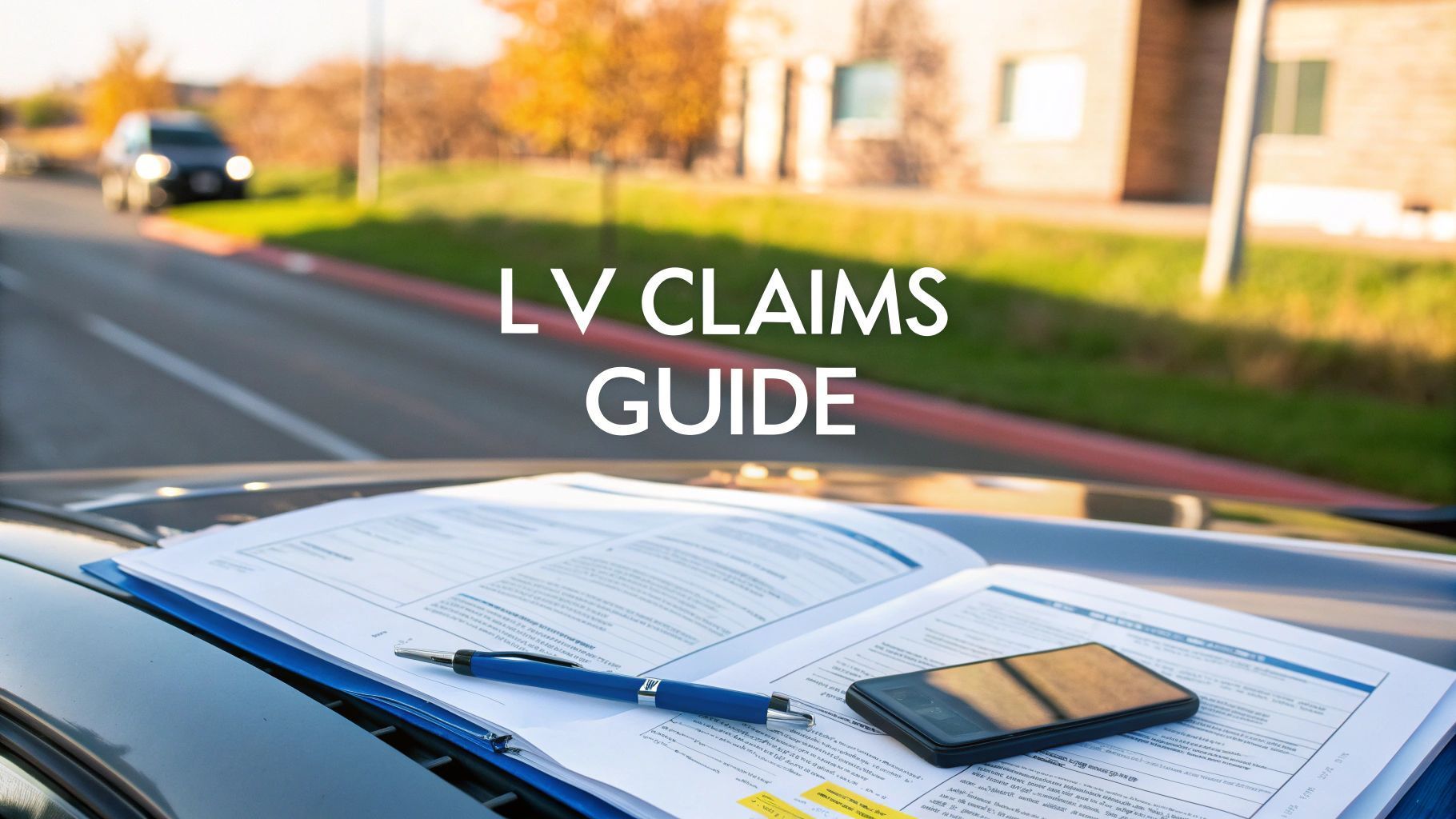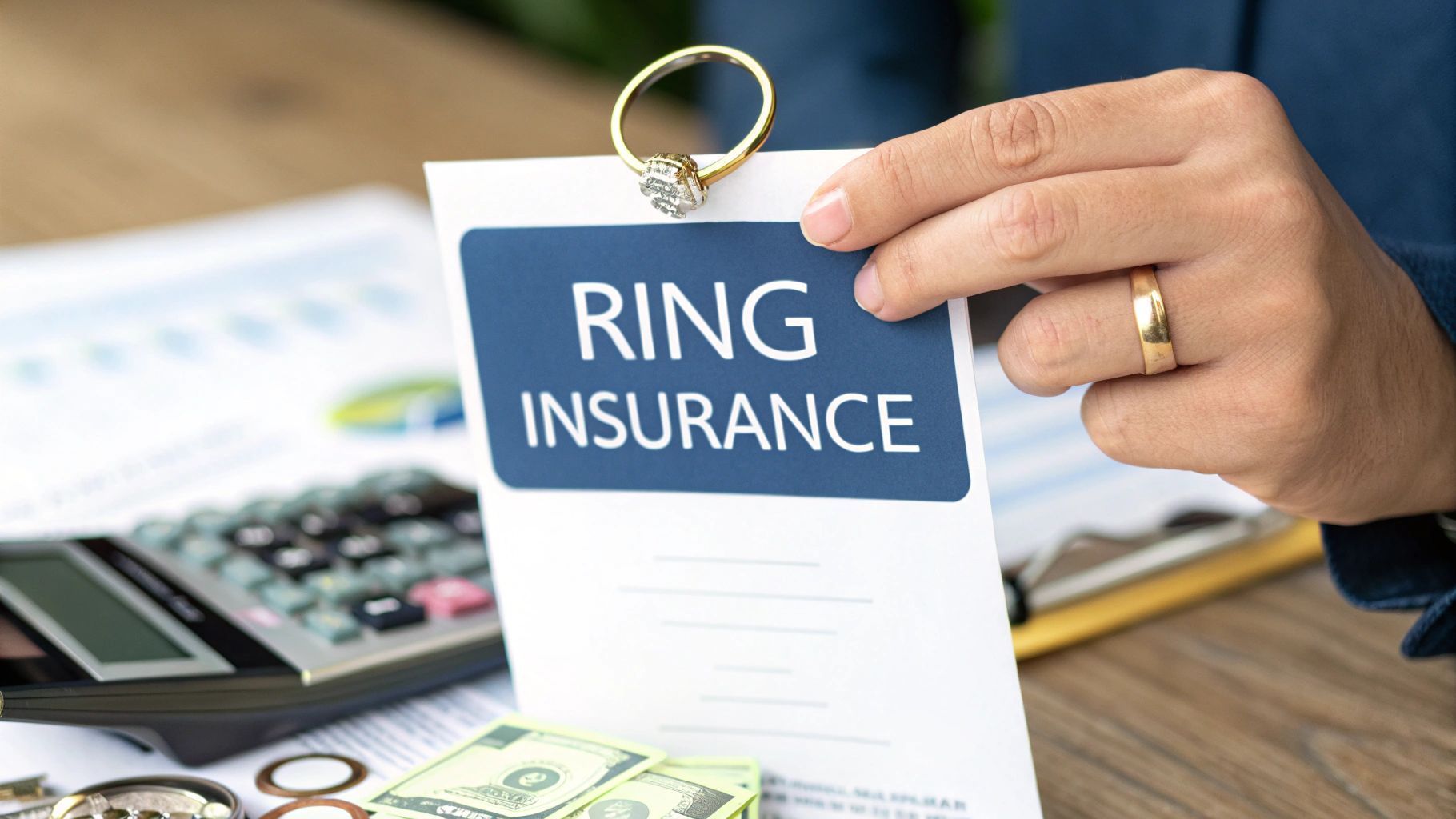Your Guide to Proving Your No Claims Discount
Think of your no claims proof as your official driving record. Each year you drive without making a claim, you earn another mark of distinction. It’s the formal document from your insurer that confirms your claim-free history, and it’s your key to unlocking significant discounts on your car insurance premium.
Why Provable No Claims History is Your Best Defence Against High Premiums
In the world of car insurance, your track record behind the wheel is paramount. A clean, provable history demonstrates you're a low-risk driver, making you a much more attractive customer to insurers. The reward for this is your No Claims Discount (NCD), genuinely one of the most powerful ways to slash your annual insurance bill.
But here’s the catch: this discount doesn't automatically follow you when you switch providers. You have to prove you've earned it.
This is where your no claims proof becomes non-negotiable. It’s the official, verifiable evidence that substantiates your claim to a discount. Without it, a new insurer has no choice but to treat you as an unknown quantity, potentially costing you hundreds of pounds in lost savings.
The Power of a Verifiable History
The entire system of rewarding careful drivers hinges on being able to prove your claim-free years. This verification process isn't just bureaucratic red tape; it's a critical defence against insurance fraud, a crime that ultimately costs every honest driver more money.
When individuals receive discounts they haven't earned through falsified documents, it undermines the integrity of the system. Insurers must recover these losses, and they do so by pushing up premiums for everyone else. Insurance fraud isn't a victimless crime; it hits the pockets of every honest policyholder.
So, when you provide legitimate no claims proof , you're not just securing your own discount. You’re helping to maintain a fair insurance market by ensuring the rewards for safe driving are properly and provably earned.
The table below shows just how quickly these discounts can add up, directly rewarding you for every year you stay claim-free.
Typical No Claims Discount Progression
This table illustrates how the No Claims Discount (NCD) typically increases with each consecutive year of claim-free driving, showing the direct financial benefit to UK motorists.
| Claim-Free Years | Typical Discount Percentage |
|---|---|
| 1 Year | 30% |
| 2 Years | 40% |
| 3 Years | 50% |
| 4 Years | 60% |
| 5+ Years | 65% or more |
As you can see, the financial benefits grow substantially over time, which is why it's so important to protect—and be able to prove—your hard-earned record.
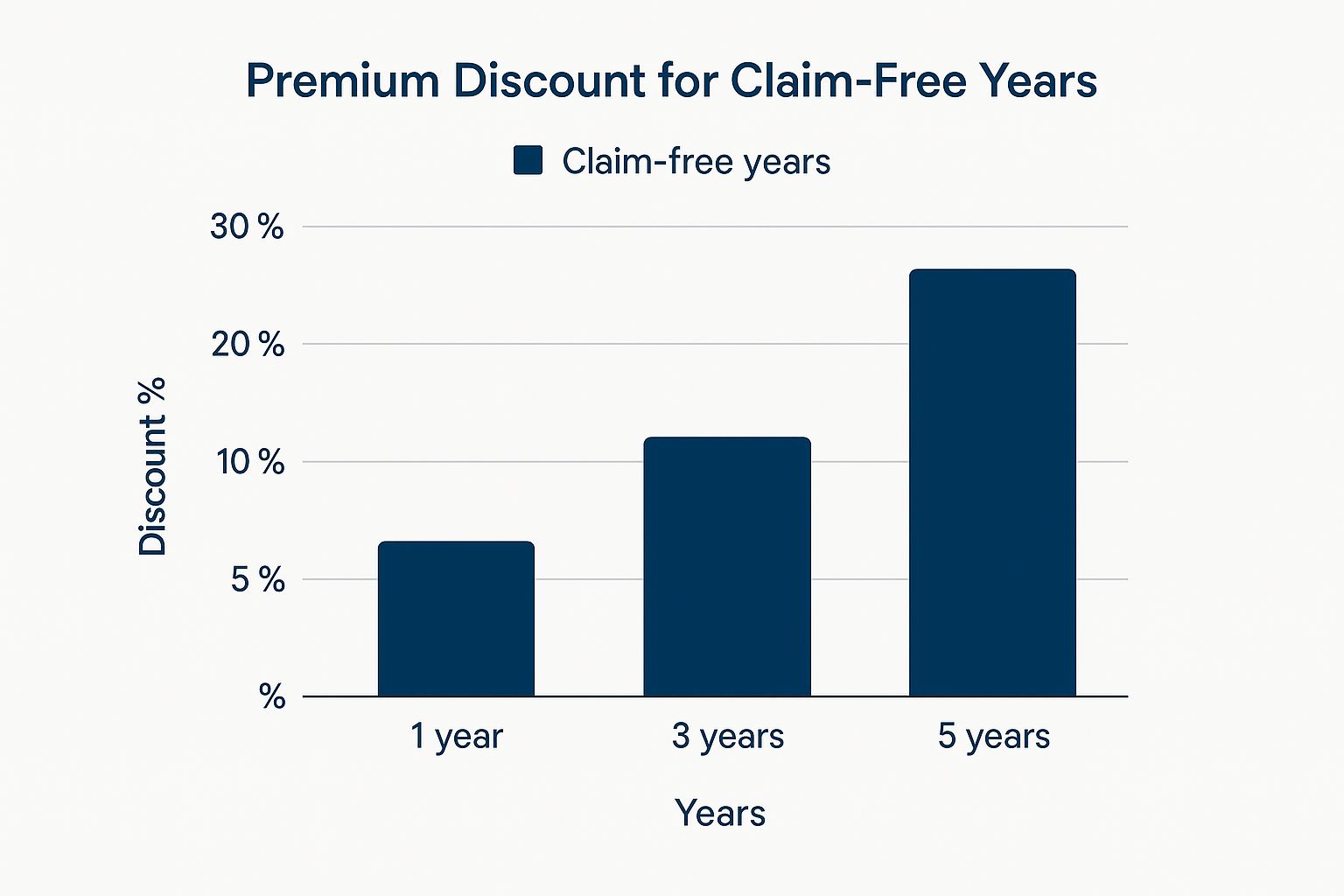
A No Claims Discount is a reward system for drivers who avoid making claims. For each consecutive year without a claim, drivers can earn increasing discounts that might reduce costs by as much as 50% after nine claim-free years, incentivising safer driving across the board. Discover more insights about how No Claims Bonuses work on choicequote.co.uk.
The Hidden Costs of Losing Your No Claims Discount
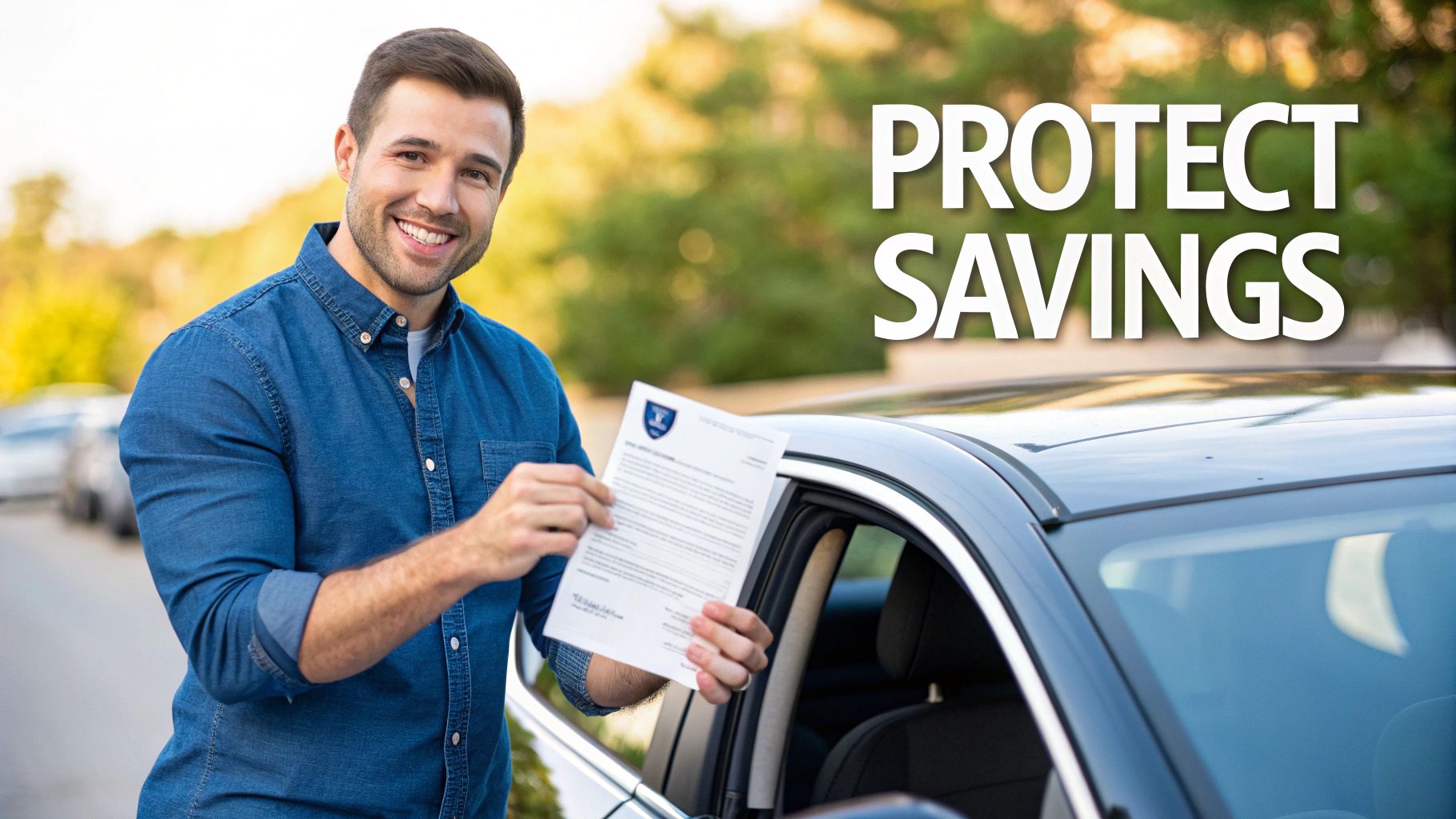
It’s easy to write off a minor bump or a car park scrape as a one-off headache. You pay the excess, get the car fixed, and assume that’s the end of it. But the real sting from a single claim isn’t in the repair bill—it’s a long-term penalty that can follow you for years.
The moment you make a claim, your insurer can wipe out the No Claims Discount (NCD) you’ve spent years carefully building. Suddenly, you're not just paying for one incident; you’re facing much higher premiums at your next renewal, and the one after that. Losing a massive 65% discount means you’re forced to start climbing the ladder all over again from a far more expensive starting point.
It's a ripple effect that most drivers completely underestimate. A small, forgettable incident can easily trigger what’s known as the 'minor incident cost shock', where the total financial damage ends up being far greater than the initial cost of the repair.
The Long-Term Financial Penalty
Picture this: a driver has five years of claim-free motoring under their belt. After a small collision, they face a repair bill for a few hundred pounds. The real damage, however, plays out over the next five years as their premiums shoot up. They lose their maximum discount and have to slowly, painfully, earn it back.
This is how a minor inconvenience spirals into a major financial burden. In fact, research shows that a simple car park scrape can end up costing a driver over £3,000 in the long run, once you factor in the initial costs and the sustained hike in premiums over five years. You can learn more from the findings of the minor incident cost shock report.
And this is precisely why having proper, verifiable no claims proof is so important. It’s your best defence against unfairly high costs when you switch insurers. Without it, you can’t prove you ever earned a discount, leaving you exposed to paying the highest possible premium.
Your no claims proof is more than just a piece of paper; it’s your leverage. It demonstrates a history of responsible driving that insurers are willing to reward, protecting you from the severe, multi-year financial penalties of a single claim.
Why Proof of Your Past Matters
Insurers work on risk. A driver with a long, proven, clean record is, statistically speaking, less likely to make a claim. Your no claims proof is the official document that validates this low-risk status. It gives a new insurer a clear view of your history, allowing them to offer a premium that actually reflects your careful driving, rather than treating you like a complete unknown.
Without that provable history, you’re essentially back at square one. You lose access to the single biggest discount available, forcing you to pay a premium that has no connection to your real-world driving habits. Protecting and being able to prove your NCD is the most effective way to keep your insurance costs under control for the long haul.
How Fraud and Uninsured Drivers Inflate Your Premiums

It’s a frustrating reality for every safe driver: you have a perfect driving record, yet your insurance premium creeps up year after year. While things like inflation and rising repair costs play their part, two major issues are quietly adding pounds to your bill: insurance fraud and the shocking number of uninsured drivers on UK roads.
These problems create a massive financial hole that the entire insurance industry—and, ultimately, every honest policyholder—is forced to fill.
When a criminal network stages a ‘crash for cash’ scam, or an uninsured driver causes a collision and vanishes, legitimate insurers often have to pick up the tab. This isn't a victimless crime. The losses are spread across the board, passed on to responsible drivers like you through higher annual premiums.
The Ripple Effect of Insurance Fraud
Insurance fraud isn't just a few opportunists trying their luck; it's often a highly organised criminal enterprise. These schemes range from exaggerating a claim after a genuine accident to staging deliberate collisions purely to generate bogus injury and damage payouts. The problem is so widespread that it costs the industry, and by extension all of us, billions each year.
The scale of the problem is staggering. Dishonest claims don't just disappear into thin air; they add billions to the operational costs of insurers. This financial pressure forces them to adjust their pricing models, meaning every single driver pays a little more to cover the illegal activities of a few. You can explore the true cost of insurance fraud to see just how deep this problem runs.
Think of insurance fraud as a hidden tax on every honest policyholder. When a fraudulent claim gets paid out, those funds are recovered by increasing premiums for everyone, directly hitting your wallet.
The Uninsured Driver Problem
On top of the fraud issue, there’s the persistent problem of uninsured motorists. Driving without insurance isn’t just illegal; it places a huge and unfair burden on the rest of society. When an uninsured driver is at fault in an accident, there’s no policy to cover the victim’s costs for vehicle repairs or medical treatment.
As of 2025, it’s estimated that around 1.05 million vehicles are being driven on UK roads without any insurance. This creates an annual financial black hole of roughly £340 million for the insurance system. That cost translates to a hidden surcharge of about £30 on every insured driver's premium.
These drivers are also far more likely to be involved in hit-and-run incidents, leaving victims to navigate a complicated and often frustrating claims process on their own.
This is where the importance of verifiable no claims proof becomes crystal clear. By ensuring that every discount is legitimate and accurately proven, the system gains integrity. It makes it harder for fraudsters to manipulate their history and helps insurers properly reward genuinely safe drivers. Ultimately, it helps create a fairer market and control the rising tide of costs for all of us.
Getting Your Hands on Your No Claims Proof
So, you've sniffed out a better insurance deal and you're all set to make the switch. Fantastic. But before you do, there’s one crucial bit of admin: securing your no claims proof. This document is the golden ticket your new insurer needs to see before they’ll apply that hard-earned discount to your premium.
Getting hold of it is usually pretty painless. Most insurers will automatically post it or email it over once your policy comes to an end, either because you've cancelled or simply decided not to renew. It often gets bundled in with your cancellation or final renewal letters, so have a proper look through those before they end up in the recycling bin.
If it doesn’t show up on its own, don't worry. A quick call or email to your old insurer’s customer service team is all it takes. Just ask them for your proof of No Claims Discount—they are legally required to provide it.
What to Look For on Your No Claims Proof
When that document finally arrives, resist the urge to just file it away. Take a moment to give it a once-over. A proper, valid no claims proof needs to be official and contain a few key details to avoid any hiccups with your new provider.
To be accepted without a fuss, your proof must clearly show:
- Your full name and address (the personal details).
- The policy number from your previous cover.
- The policy expiry date , showing exactly when your cover ended.
- The number of claim-free years you’ve built up.
This information is non-negotiable. It proves who you are and ties your clean driving record to a specific policy. If anything is missing or looks a bit off, your new insurer might reject it, sending you right back to square one with your old provider.
A quick heads-up: this proof doesn't last forever. Most UK insurers will only accept a no claims proof that is less than two years old . If you've taken a break from driving for longer than that, you’ll most likely have to start building up your NCD from scratch again.
It's always a good idea to double-check that the document you receive has everything your new insurer will need. A quick scan can save you a lot of hassle down the line.
Here’s a simple checklist to help you verify your document is good to go.
Checklist For Your No Claims Proof Document
| Checklist Item | Why It's Important |
|---|---|
| Official Insurer Letterhead | Confirms the document is genuine and not just a renewal notice. |
| Your Full Name & Address | Verifies your identity and links the proof directly to you. |
| Previous Policy Number | Allows your new insurer to trace and confirm your insurance history. |
| Policy Expiry Date | Shows when your cover ended and proves the NCD is current. |
| Number of NCD Years | This is the key figure your new insurer needs to calculate your discount. |
| Less than Two Years Old | Insurers won't accept 'stale' proof, so the date is crucial. |
Making sure these details are present and correct will ensure a smooth and speedy transition to your new, cheaper policy.
Common Pitfalls to Sidestep
One of the most common mistakes people make is sending the wrong piece of paper. It’s easy to grab your renewal invitation, see the NCD mentioned, and assume that's what's needed. But it's not. A renewal notice is just an offer; you need the final, official letter that confirms the policy has ended and states your final NCD entitlement.
Another snag can be the format. In this day and age, most insurers are happy with a clear PDF or digital copy sent over by email, but it never hurts to check their specific requirements first. A blurry phone picture or a poorly scanned document will just cause delays.
For a much smoother way to handle your insurance history, modern tools are now available to help you manage and share your data securely. You can learn more about protecting your insurance records with a digital proof solution .
Common No Claims Discount Myths Debunked
The world of car insurance is full of confusing jargon and half-truths, and nowhere is this more true than with the No Claims Discount (NCD). These misunderstandings can be seriously costly, leading drivers to make the wrong call about whether to claim or when to switch insurers.
It's time to clear the air and debunk some of the most stubborn myths out there.
One of the biggest misconceptions is that a ‘non-fault’ claim won't touch your NCD. It seems logical, right? If an accident wasn't your fault, you shouldn't be penalised. But that’s not always how it works. If your insurer can't recover all their costs from the other party's insurer, they may well reduce your NCD at renewal time.
This is because your NCD rewards a claim-free history, not necessarily a blame-free one. Having clear, provable no claims proof showing a long, unbroken record is your best defence against losing your hard-earned discount.
Myth One: A Non-Fault Claim Never Affects Your NCD
As we just touched on, this is a dangerous assumption. An insurer's main goal after paying out is to get its money back.
If they can’t, your NCD is at risk. Here are a few common scenarios where that happens:
- Uninsured Drivers: If you're hit by an uninsured driver, there's no insurer for your provider to claim from.
- Disputed Liability: In those tricky car park prangs where fault is hard to prove, insurers might agree to a 50/50 split, which can hit both drivers' discounts.
- Foreign Drivers: Accidents involving foreign-registered vehicles can make the cost recovery process a real headache for your insurer.
The only time your NCD is guaranteed to be safe after a non-fault incident is if your insurer recovers 100% of its expenses.
Think of it this way: a No Claims Discount is a reward for not costing your insurer money. Even if an accident isn't your fault, if it leads to a financial loss they can't recover, your discount could still take a hit.
Myth Two: You Can Transfer Your NCD to Anyone
So many people think they can just pass on their NCD to a partner or one of their children to help them get cheaper insurance. Unfortunately, that’s not how it works. A No Claims Discount is earned by one person and is tied directly to their personal driving record. It’s strictly non-transferable.
The discount is a reflection of your proven, low-risk driving history. Transferring it would completely undermine the system's integrity, as it would give a discount to someone who hasn't actually earned it, misrepresenting their real risk level to the insurer.
The only way to get that discount is to earn it yourself, one year at a time, and have the official no claims proof to back it up.
The Future of Verifying Your Driving History
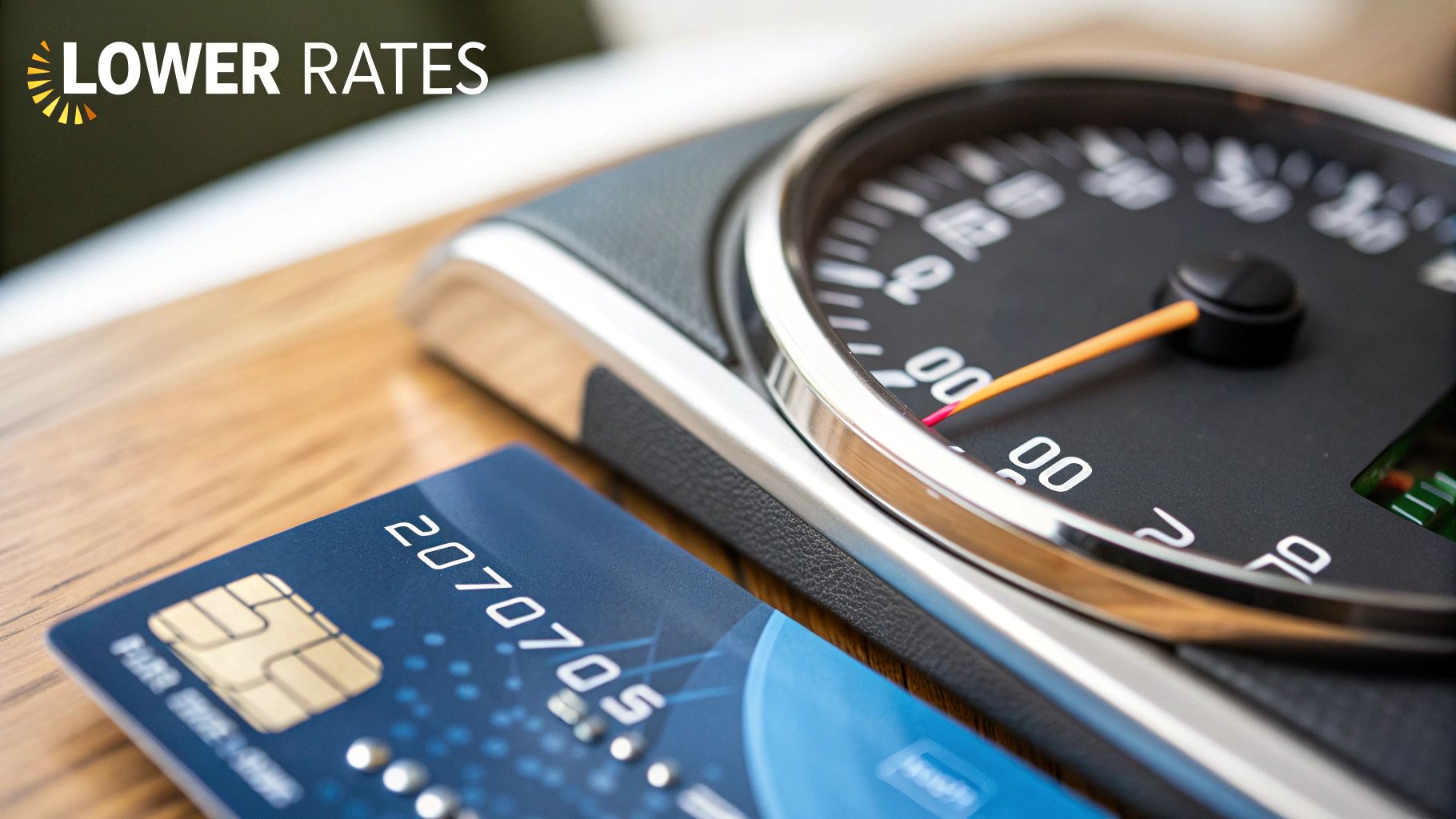
The days of waiting by the letterbox for that crucial piece of paper are, thankfully, numbered. The traditional way of providing no claims proof — relying on paper documents and manual checks — has always been slow, clunky, and wide open to forgery and simple human error.
This old-fashioned approach creates headaches for everyone. For drivers, it means chasing down paperwork and hitting frustrating delays just when they want to switch insurers. For insurers, it means pouring time and money into manually verifying documents, a process that still allows fraudulent claims to slip through. And who pays for that? Ultimately, every honest policyholder.
The insurance world is finally shifting towards a smarter, more secure model built on digital verification and shared, trusted data. This is where things get interesting.
The Shift to Digital Verification
Imagine a system where your claim-free history is stored securely in a digital format. When you want a new quote, you can grant an insurer instant access to verify it. No more requesting letters, no more scanning documents, no more waiting. It’s faster, far more convenient, and a whole lot more secure.
This move towards robust authentication methods creates a much more transparent marketplace. It means every discount is based on a legitimate, provable driving record, making it incredibly difficult for dishonest individuals to game the system with fake documents.
A seamless, digital verification system benefits everyone. It empowers drivers by giving them easy control over their own data, and it provides insurers with the confidence that they are assessing risk accurately and rewarding the right people.
By making no claims proof instantly verifiable, these systems tackle fraud right at the source. When discounts are awarded correctly, it helps stabilise premiums for all insured drivers. It's a critical step in building a fairer, more efficient market for everyone. To see how this fits into the bigger picture, you can explore why authentication is the missing piece in the future of insurance claims .
Ultimately, these changes aren't just about convenience. They’re about strengthening the integrity of the entire insurance system, ensuring careful drivers are rewarded without all the unnecessary obstacles.
Frequently Asked Questions About No Claims Proof
We’ve covered a lot of ground, but a few specific questions always pop up. Let's tackle some of the most common ones to make sure you’re fully equipped to manage your discount.
What’s the Difference Between NCD and NCB?
You'll see these two terms thrown around a lot, often in the same sentence. Don't let it confuse you—they mean exactly the same thing.
NCD stands for No Claims Discount , while NCB is short for No Claims Bonus . Both refer to that well-earned reduction on your premium for every year you drive without making a claim. It’s just a matter of which term an insurer prefers to use.
How Long Does No Claims Proof Last?
This is a big one. Your no claims proof doesn't have an infinite shelf life. Most UK insurers will only accept proof that is less than two years old .
If you've taken a break from driving or haven't been the main policyholder on a car insurance policy for more than 24 months, your discount will likely expire. Unfortunately, that means you’ll have to start building it back up from scratch.
Can I Use My Company Car NCD on a Personal Policy?
This is a tricky area, and the short answer is: it depends entirely on the insurer. A No Claims Discount earned on a company car policy isn’t automatically transferable to a personal one.
However, some insurers are willing to offer an introductory discount if you can get a letter from your employer. This letter would need to confirm your claim-free driving history while using the company vehicle. It’s always worth asking the question, but never assume it’s a given.
Your ability to provide legitimate, verifiable no claims proof is your single best tool for securing lower insurance premiums. It acts as a shield against the rising costs driven by fraud and uninsured motorists, ensuring your safe driving record is properly rewarded.
Can I Protect My No Claims Discount?
Yes, you can. Most insurers offer an optional add-on called "NCD Protection." For a small extra fee, this allows you to make a certain number of claims within your policy year (usually one or two) without it damaging your hard-earned discount level.
Think of it as a safety net. If you’ve built up a significant discount over the years, protecting it can offer real peace of mind against a single, unfortunate incident.
Ready to eliminate the hassle and fraud associated with traditional insurance verification? Proova offers a secure, digital solution to authenticate your history and assets instantly. Visit Proova today to see how we're making insurance smarter and more secure for everyone.



